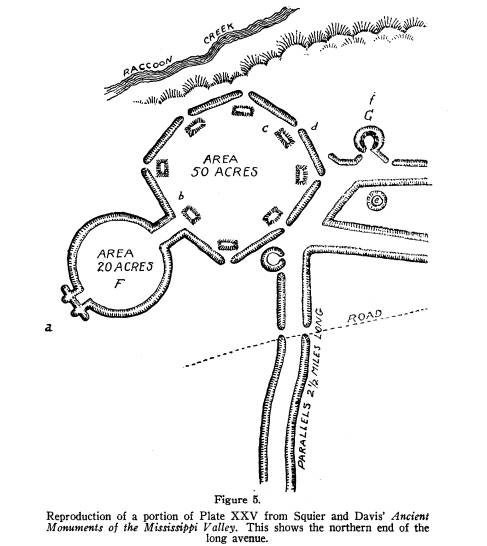Ohio History Journal


A NEWLY DISCOVERED EXTENSION OF THE
NEWARK WORKS
By DACHE M. REEVES1
The study of aerial photographs of the famous Newark group
of prehistoric earthworks resulted in the discovery of a hitherto
unknown extension to these works. An interesting feature of this
discovery is the fact that an important section of the works was
found on the Newark flying field. This area had been prepared
for flying purposes after having been under cultivation for a long
period, and the former embankments were obliterated entirely.
It would have been difficult, if not impossible, to have located
these earthworks on the ground, but on the photograph they stand
out clearly. This is a striking illustration of the value of aerial
photography in archaeology.
A portion of one of the aerial photographs is reproduced
herewith as Figure 1. This photograph was taken from 10,000
feet in January, 1934, the winter season being selected in order
to have the ground as bare as possible. Figure 4 is a tracing of
the salient features of the photograph, showing the L-shaped fly-
ing field and the parallel embankments forming a long avenue.
The small white circle with three arms on the flying field is the
usual symbol employed to mark airdromes.
It will be observed that the avenue, after passing the airport,
makes a slight bend and continues to the edge of the terrace on the
north bank of the stream. Tracing backward, the avenue can be
followed almost to the octagon, the northern end being destroyed
by a residential suburb of Newark. The avenue is remarkably
straight, as shown in Figures 2 and 3.
1 Captain Dache M. Reeves, of the U. S. Army Air Corps, is one of America's
outstanding experts in aerial photography. For the past two years he has been co-
operating with the Society in an aerial survey of the ancient mounds and fortifica-
tions of Ohio with most gratifying results. The survey, rearing completion, will be
a definite asset to Ohio prehistory, and will place the State well in the forefront in this
most recent method of recording and interpreting major archaeological evidences.--
H. C. Shetrone.
(189)
